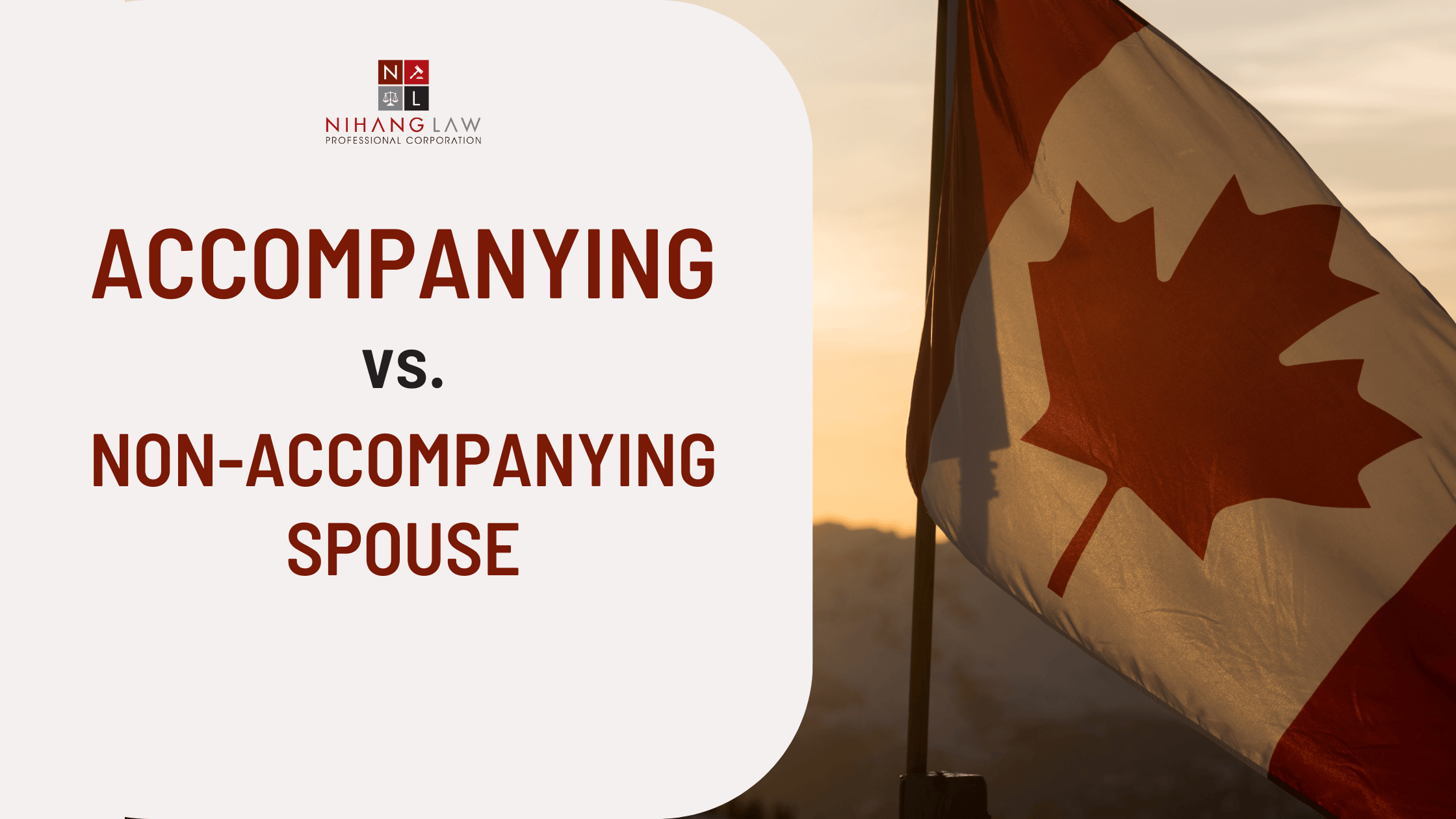
19th August 2025BY Nihang Law
Accompanying vs. Non-Accompanying Spouse in Canadian PR Applications
When applying for permanent residence (PR) in Canada, one of the key decisions applicants face is whether to include their spouse as accompanying or non-accompanying.
This choice has a direct impact on the application itself, the Comprehensive Ranking System (CRS) score, and the future of your family in Canada. Understanding the differences will help you make the decision that best suits your circumstances and immigration hopes.
What is an Accompanying Spouse?
An accompanying spouse is included in your PR application and immigrates to Canada at the same time as you. In practical terms, this means your spouse undergoes medical, criminal, and background checks along with you. If the application is approved, both of you are granted PR status together.
The main advantage of choosing this route is that your family stays united, and your spouse gains access to PR benefits immediately.
However, there are trade-offs. If your spouse has health issues or background concerns, these can negatively affect the outcome of your entire PR application.
Additionally, if your spouse has a lower language score, limited education, or less work experience, your CRS score may decrease, potentially reducing your chances of being invited to apply for permanent residency.
What is a Non-Accompanying Spouse?
A non-accompanying spouse, while acknowledged in your application, does not immigrate with you to Canada at the same time. They still complete medical and background checks, but their results generally carry less weight in determining the success of your application.
Non-accompanying spouses must still be declared and may be required to undergo medical examinations. In certain cases, IRCC may also do background checks. While they are not immigrating at the same time, any inadmissibility, such as serious medical conditions or criminality, can still impact your application.
This option can be beneficial if your spouse has complicating factors, such as weaker qualifications or background concerns, that would otherwise lower your CRS score. By applying alone, you may improve your ranking and simplify your application.
On the other hand, this decision often means living apart from your spouse for a period of time. To reunite in Canada, you would later need to submit a separate sponsorship application, which involves additional costs and processing delays.
Choosing Between the Two
Deciding whether your spouse should accompany you depends on balancing long-term family unity with short-term application success. An accompanying spouse ensures you can begin your life to Canada together, but it may weaken your CRS score or add risk if your spouse faces background or health challenges.
A non-accompanying spouse can strengthen your application in the short term but will likely result in living apart until you can complete the sponsorship process.
Here is a quick comparison:
|
Accompanying Spouse |
Non-Accompanying Spouse |
| Keeps the family unit together during the PR process |
May result in family separation until sponsorship is completed |
|
Spouse receives PR status at the same time as the principal applicant |
Spouse will only receive PR through later sponsorship |
| Eligible for PR benefits much sooner |
Delayed access to PR benefits |
|
Negative background checks of spouse impact the entire application |
Background results carry less weight in the initial application |
| May require more documentation |
Application process can be simpler |
|
CRS score may drop if spouse has lower qualifications (up to 40 points) |
CRS score may improve if spouse has lower qualifications or background concerns |
|
Sponsorship later requires extra time and money |
Avoiding Misrepresentation
No matter which option you choose, it is critical to provide accurate information. Misrepresenting your marital status, failing to declare your spouse, or withholding details, even unintentionally, can be treated as misrepresentation.
The consequences are serious: your application could be refused, and you may face a five-year ban from reapplying.
To protect your application, always confirm that your marital status is clearly disclosed, your spouse is correctly identified as either accompanying or non-accompanying, and all medical and background checks are completed as required.
A small oversight can have lasting consequences, so it is always worth taking the time to carefully review your submission.
How Nihang Law Can Help
The choice between an accompanying and a non-accompanying spouse is not always straightforward, and the consequences of misrepresentation can be severe. At Nihang Law, we help applicants evaluate their options, prepare complete and accurate applications, and avoid costly mistakes.
With our guidance, you can make informed decisions that protect both your immigration goals and your family’s future in Canada. If you are preparing a PR application or need advice on spousal sponsorship, contact Nihang Law today. Our immigration team is here to guide you every step of the way.
Thank you for reading this post, don't forget to subscribe!



